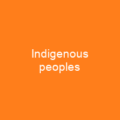Discovering Canada: A Country of Vast Diversity and Rich History
Imagine a land where diverse cultures, breathtaking landscapes, and rich history intertwine to create one of the world’s most unique nations—Canada. Spanning from the Atlantic Ocean to the Pacific Ocean, this vast country is home to ten provinces and three territories. With its longest coastline in the world, Canada boasts an incredible array of meteorological and geological regions, each with varying population densities. The capital city, Ottawa, serves as a hub for governance, while Toronto, Montreal, and Vancouver stand out as bustling metropolises.
Indigenous peoples have inhabited this land for thousands of years, their rich history woven into the very fabric of Canada’s identity. European exploration began in the 16th century, leading to conflicts that ultimately resulted in France ceding its colonies in North America. In 1867, through a process known as Confederation, Canada was officially formed, bringing together provinces and territories under one federal government.
Canada is a parliamentary democracy and constitutional monarchy, with a high nominal per capita income and an advanced economy that relies heavily on natural resources and international trade. It’s also home to a diverse population, with over 450 ethnic origins reported in the latest census. The name ‘Canada’ itself comes from the St. Lawrence Iroquoian word kanata, meaning ‘village’ or ‘settlement,’ adopted in 1867 following Confederation.
How did Canada evolve into such a unique and diverse nation?
The Evolution of Canada: From Indigenous Settlements to Modern Times
The first inhabitants of North America migrated from Siberia around 14,000 years ago. These early settlers formed complex societies with permanent settlements, agriculture, and intricate trading networks. However, the arrival of European explorers in the 15th century marked a significant turning point. Leif Erikson and other Norse explorers were among the first Europeans to set foot on Canadian soil, followed by John Cabot and Jacques Cartier.
French explorer Samuel de Champlain established permanent settlements at Port Royal and Quebec City, while English settlers founded colonies in Newfoundland and the Thirteen Colonies. The fur trade played a crucial role in European colonization, leading to conflicts like the Beaver Wars. Early interactions between Europeans and Indigenous peoples were relatively peaceful but later became more violent as settlers forced Indigenous peoples to assimilate into Western Canadian society.
Settler colonialism reached its climax in the late 19th and early 20th centuries, with a period of redress beginning in 2008 when the Government of Canada formed a reconciliation commission. A series of four wars erupted between 1689 and 1763; later wars constituted the North American theatre of the Seven Years’ War. Mainland Nova Scotia came under British rule with the Treaty of Utrecht, while Canada and most of New France came under British control in 1763 after the Seven Years’ War.
The Royal Proclamation of 1763 established First Nation treaty rights, created the Province of Quebec out of New France, and annexed Cape Breton Island to Nova Scotia. St John’s Island became a separate colony in 1769, and the Quebec Act 1774 expanded Quebec’s territory and granted special autonomy and rights of self-administration.
The Proclamation and the Quebec Act angered many residents of the Thirteen Colonies, fuelling anti-British sentiment before the American Revolution. The Treaty of Paris (1783) recognized the independence of the United States, leading to a large out-migration of Loyalists to Canada. In 1791, the Constitutional Act divided the province of Canada into French-speaking Lower Canada and English-speaking Upper Canada, granting each its own legislative assembly.
The Canadas were involved in the War of 1812 between the US and UK, with immigration resuming at a higher level after the war. The desire for responsible government led to the Rebellions of 1837, which recommended assimilation of French Canadians into English culture by the Durham Report. Responsible government was established in the provinces east of Lake Superior by 1855, with the Act of Union 1840 merging the Canadas into a united Province of Canada.
The Oregon Treaty (1846) and Anglo-Russian Treaty (1825) established borders along the Pacific coast, paving the way for British colonies on Vancouver Island and in British Columbia. The British North America Act (1867) proclaimed Canadian Confederation on July 1, 1867, with four provinces. Manitoba was created in 1870, and British Columbia and Prince Edward Island joined in 1871.
The Yukon Territory was created in 1898, and Alberta and Saskatchewan became provinces in 1905. Between 1871 and 1896, nearly one quarter of the Canadian population emigrated south to the US. To open the West and encourage European immigration, the Government of Canada sponsored the construction of three transcontinental railways (including the Canadian Pacific Railway), passed the Dominion Lands Act to regulate settlement, and established the North-West Mounted Police to assert authority over the territory.
This period of westward expansion and nation building resulted in the displacement of many Indigenous peoples of the Canadian Prairies to ‘Indian reserves,’ clearing the way for ethnic European block settlements. Because Britain still maintained control of Canada’s foreign affairs under the British North America Act, 1867, its declaration of war in 1914 automatically brought Canada into the First World War.
Volunteers sent to the Western Front later became part of the Canadian Corps, which played a substantial role in the Battle of Vimy Ridge and other major engagements of the war. The Great Depression in Canada during the early 1930s saw an economic downturn, leading to hardship across the country.
In response to the downturn, the Co-operative Commonwealth Federation (CCF) in Saskatchewan introduced many elements of a welfare state. On the advice of Prime Minister William Lyon Mackenzie King, war with Germany was declared effective September 10, 1939. In all, over a million Canadians served in the armed forces during the Second World War, playing important roles in key battles.
The country also joined the Gulf War in 1990 and participated in peacekeeping missions in Somalia, Bosnia, and Afghanistan. Canada experienced several crises in the late 1980s and early 1990s, including Air India Flight 182, the École Polytechnique massacre, and the Oka Crisis.
Attempts to accommodate Quebec nationalism constitutionally through the Meech Lake Accord failed in 1990. This led to the formation of the Bloc Québécois in Quebec and the invigoration of the Reform Party of Canada in the West. A second referendum on Quebec sovereignty was held in 1995, with a margin of 50.6-49.4 percent, and led to the Supreme Court ruling that unilateral secession by a province is unconstitutional.
Canada’s post-war economic growth led to the emergence of a new Canadian identity, marked by the adoption of the maple leaf flag in 1965, the implementation of official bilingualism (English and French) in 1969, and the institution of official multiculturalism in 1971. Socially democratic programs were also instituted.
Finally, another series of constitutional conferences resulted in the Canada Act 1982, the patriation of Canada’s constitution from the United Kingdom, concurrent with the creation of the Canadian Charter of Rights and Freedoms. Canada had established complete sovereignty as an independent country under its own monarchy.
Nature and Geography: A Land of Vast Diversity
Canada is a vast country with diverse geography, including the world’s largest freshwater lakes, the longest coastline, and vast maritime terrain. The country encompasses 9,984,670 square kilometers and shares land borders with several countries, including the United States and Greenland.
The country can be divided into seven physiographic regions: the Canadian Shield, interior plains, Great Lakes–St. Lawrence Lowlands, Appalachian region, Western Cordillera, Hudson Bay Lowlands, and Arctic Archipelago. Canada has over 2,000,000 lakes containing much of the world’s fresh water, with geologically active regions and potentially active volcanoes.
Average winter temperatures range from -15°C to -40°C, while coastal regions have a temperate climate with mild winters. Average summer high temperatures vary from 25-30°C in inland areas, while the Arctic is covered by ice and permafrost.
Canada’s annual average temperature has risen by 1.7°C since 1948, with higher warming rates in the North and Prairies. Air pollution has caused acid rain in southern regions, impacting waterways and ecosystems.
Biodiversity and Conservation: Protecting Nature’s Wonders
Canada is home to over 80,000 classified species of wildlife, but many are at risk due to human activities, invasive species, and environmental issues. About 65% of Canadian resident species are considered ‘Secure,’ with approximately half of the landscape intact and relatively free of human development.
About 12.1% of Canada’s landmass is conservation areas, including boreal forests that cover over 3 million square kilometers, making them the largest intact forest on Earth. Four percent designated as protected areas, 13.8 percent of its territorial waters conserved, Canada’s first National Park, Banff, established in 1885, Canada’s oldest provincial park, Algonquin, established in 1893,
These conservation efforts are crucial for maintaining the ecological balance and preserving Canada’s natural heritage.
Governance: A Nation of Laws and Rights
Canada is described as a ‘full democracy’ with liberalism and egalitarianism. An emphasis on social justice has been a distinguishing element of Canada’s political culture, with peace, order, and good government being founding principles of Canadian federalism.
Canada has a parliamentary system with a constitutional monarchy. The monarch appoints a representative, the governor general, to carry out most of their ceremonial royal duties. The Prime Minister’s Office is one of the most powerful institutions in government, while the Parliament of Canada passes all federal statute laws comprising the monarch, the House of Commons, and the Senate.
Each of the 338 members of Parliament is elected by simple plurality in an electoral district. The Constitution Act requires no more than five years between elections, but the Canada Elections Act limits this to four years with a fixed election date in October. The Senate has 105 members who serve until age 75 and are apportioned on a regional basis.
Canadian federalism divides government responsibilities between the federal government and provinces, which have unicameral legislatures operating in parliamentary fashion. The Constitution of Canada is the supreme law, consisting of written text and unwritten conventions. The Constitution Act, 1867, affirmed governance based on parliamentary precedent and divided powers between the federal and provincial governments.
The Statute of Westminster, 1931, granted full autonomy, and the Constitution Act, 1982, ended legislative ties to Britain and added a constitutional amending formula and the Canadian Charter of Rights and Freedoms. The judiciary interprets laws and has the power to strike down acts of Parliament that violate the constitution.
The Supreme Court is the highest court, final arbiter, and has nine members appointed by the governor general on advice from the prime minister and minister of justice.
Economy: A Nation of Opportunity
Canada’s economy is one of the world’s largest, with a nominal GDP of over $2 trillion. Its trade in goods and services reached $2.016 trillion in 2021. The country has a mixed-market economy with a large global trade presence, employing around 95,000 active and reserve personnel, with a military expenditure of approximately $26.9 billion.
Canada’s economic integration with the US has increased significantly since WWII, with 15 free trade agreements with 51 countries as of 2023. Canada is a net exporter of energy, particularly oil and gas, and a leading exporter of agricultural products, mining commodities, and manufactured goods.
The country invests heavily in science and technology, spending $43.2 billion on domestic research and development in 2022, producing 15 Nobel laureates, and ranking seventh in the worldwide share of articles published in scientific journals. Major Canadian scientific contributions include the creation of the modern alkaline battery, discovery of insulin, and developments in genetics and deep learning.
The Canadian Space Agency runs a space program focused on deep-space, planetary, and aviation research, contributing to the International Space Station with robotic tools like Canadarms. Canada has initiated long-term projects such as Radarsat satellite series and Black Brant rocket series.
Population: A Nation of Diverse Peoples
Canada’s 2021 census enumerated a population of 36,991,981, with an estimated increase to over 40 million by 2023. The main drivers of population growth are immigration and natural growth, driven mainly by economic policy and family reunification.
The country has one of the highest per-capita immigration rates in the world, leading in refugee resettlement, with 47,600 admissions in 2022. Major urban areas such as Toronto, Montreal, and Vancouver receive new immigrants.
Canada’s population density is among the lowest in the world, with 95% residing south of the 55th parallel north. The majority (70%) live below the 49th parallel, with 50% living south of 45°42′ (45.7 degrees) north.
The most densely populated area is the Quebec City-Windsor Corridor in Southern Quebec and Southern Ontario along the Great Lakes and St. Lawrence River.
Culture: A Nation of Many Voices
Canada’s culture is a rich tapestry woven from British, French, Indigenous, African, Caribbean, and Asian influences. Multiculturalism is Canada’s official state policy, promoting inclusiveness for all its people. The country has an officially bilingual province in New Brunswick, and other provinces with significant French-speaking populations include Ontario, Alberta, and Manitoba.
There are 11 Indigenous language groups with over 65 distinct languages and dialects in Canada. Several languages have official status in the Northwest Territories. As of the 2021 census, more than 7.8 million Canadians listed a non-official language as their first language, including Mandarin, Punjabi, Cantonese, Spanish, Arabic, Tagalog, Italian, German, and Tamil.
Canada is religiously diverse with a wide range of beliefs and customs, and has no official church. The government is committed to religious pluralism and freedom of religion is constitutionally protected. Christianity remains the largest religion in Canada, followed by people reporting irreligion or having no religion.
Healthcare: A Nation Committed to Well-being
Healthcare in Canada is delivered through publicly funded health care systems, informally called Medicare. It is guided by the Canada Health Act of 1984 and is universal. Around 30% of Canadians’ healthcare is paid for through the private sector. Approximately 65-75% of Canadians have some form of supplementary health insurance.
Canada is experiencing an increase in healthcare expenditures due to a demographic shift toward an older population. In 2021, the average age was 41.9 years and life expectancy was 81.1 years. 88% of Canadians reported having good or very good health, but 80% self-report having at least one major risk factor for chronic disease.
Canada has one of the highest rates of adult obesity among OECD countries, contributing to approximately 2.7 million cases of diabetes. Four chronic diseases account for 65% of deaths in Canada. Healthcare spending reached $308 billion in 2021, accounting for 12.7% of GDP.
Canada performs close to average on most OECD health indicators, but ranks second-to-last in a report by the Commonwealth Fund. Identified weaknesses include higher infant mortality rate, prevalence of chronic conditions, long wait times, and poor availability of after-hours care.
Education: A Nation of Lifelong Learners
Education in Canada is publicly funded and overseen by federal, provincial, and local governments. Education is divided into primary, secondary, and post-secondary education, with both English and French available in most places. Many universities are publicly funded, including the oldest institution in Canada, Université Laval. The University of Toronto has over 85,000 students.
Canada is one of the most educated countries in the world, ranking first worldwide for tertiary education and investing heavily in it (over $20,000 per student). 89% of adults aged 25-64 have earned a high school degree, compared to an OECD average of 75%. Canada has a strong literacy rate of 99%, with mandatory education age ranging from 5-18 years.
Over 60,000 children are homeschooled in the country as of 2016. Canada is well-performing in reading literacy, mathematics, and science, with an average student score of 523.7.
Culture and Symbols: A Nation of Rich Traditions
Canada’s culture reflects its diverse origins, combining British, French, Indigenous, and American influences. Movements like the Group of Seven, abstract art, and conceptual art have shaped modern painting in Canada, while Indigenous artists like Norval Morrisseau combined traditional techniques with modern styles.
Contemporary art has seen a revival of figurative art. Canadian music reflects regional scenes, with a vast infrastructure supporting church halls, conservatories, performing arts centres, record companies, radio stations, and television music video channels. Government support programs for Canadian musicians and entrepreneurs contribute to the country’s large music industry.
Patriotic music in Canada dates back over 200 years, with ‘The Maple Leaf Forever’ serving as an unofficial national anthem until 1980. The country’s official national sports are ice hockey and lacrosse, with other popular professional games including curling, basketball, and soccer.
Canada shares several major professional sports leagues with the US, with teams in the NHL, MLS, MLB, NBA, and more. Canadians enjoy a variety of sports, with swimming, cycling, and running being the most common participatory activities. The country has enjoyed success in both Winter and Summer Olympics and has hosted high-profile international sporting events.
Canada is scheduled to co-host the 2026 FIFA World Cup alongside Mexico and the US.

You want to know more about Canada?
This page is based on the article Canada published in Wikipedia (retrieved on March 14, 2025) and was automatically summarized using artificial intelligence.







